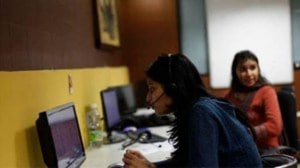Rallying to the call of hate
In a democracy, people must have the right and liberty to speech and movement and the right to reach out to the people.— BJP President ...

In a democracy, people must have the right and liberty to speech and movement and the right to reach out to the people.
— BJP President Venkaiah Naidu, defending the VHP’s right to launch a vijay yatra to mark 10 years of Babri masjid demolition.
A similar respect for fundamental rights led to the first violent incident in in Mumbai 10 years ago, after the demolition of the Babri masjid, the very event the VHP wants to celebrate as a victory. The parallels are striking. On that day too, December 6, 1992, the Shiv Sena decided to take out a ‘victory rally’ to celebrate the demolition in Ayodhya. The ‘cycle rally’ passed through the narrow lanes of Dharavi, once known as the largest slum in Asia, and home to a myriad communities. On its route fell a small nondescript mosque, Kadariya Masjid, and precisely at the point where the rally passed in front of it, a stone was thrown on the mosque from the rally.
In the long and tortuous life of the Srikrishna Commission, this incident emerged as the first violent incident of the Mumbai riots of December 1992 and January 1993, laying to rest the myth that the riots began when angry Muslims erupted on the streets against the police.
Even more important in the current context is that the police, when they finally acknowledged this stone-throwing incident — for it featured only as an offence registered on December 6, 1992, nowhere in their list of causes of the riots — claimed that they had not given permission for this cycle rally. Yet, their own record showed that top police officers of the area had escorted the rallyists, and had done nothing to stop them from shouting inflammatory slogans.
Interestingly, the police registered an offence under Sec 153 A against the rallyists, but didn’t arrest a single one of them till date. The accused, most of them Sena MLAs and corporators, managed to get anticipatory bail then. After the Congress came to power seven years after the incident, it took it a year to sanction prosecution and file a chargesheet, but even then no one was arrested.
This was not the only rally which led to violence. Following the glorious tradition of their mentor’s rath yatra which had shaken the country twoyears earlier, the Shiv Sena and BJP took out rally after rally even as riots raged across Mumbai. One of these was led by then MP and now union minister Ram Naik. Lathi-charged by the BJP-Sena’s bete noir, Jt CP A.A. Khan, the rallyists while dispersing indulged in arson and looting.
Another marked the revival of violence in January 1993 in the sensitive suburb of Jogeshwari, three days before the infamous Radhabai Chawl incident there, which is cited even now as the flashpoint which led to the ‘retaliation’ against Muslims in January 1993. Gajanan Kirtikar, then Sena MLA, and later Maharashtra’s minister of state for home, insisted on taking it out despite repeated ‘requests’ by the police not to do so. The mob which dispersed after the procession, began the second phase of the riots here.
Madhukar Sarpotdar, who became MP and leader of the Sena in Parliament, also had to his credit several such rallies in which memorable slogans were raised. He is currently facing trial for one of them.
Hence the VHP’s decision to take out rallies instead of one long yatra through Gujarat shouldn’t fool anyone into believing all is well.



- 011 day ago
- 0224 hours ago
- 031 day ago
- 041 day ago
- 051 day ago




























